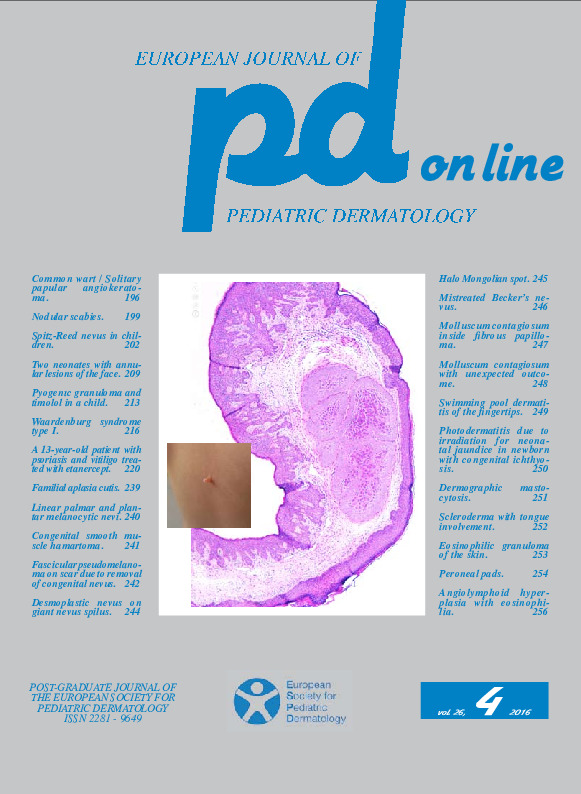Peroneal pads.
Downloads
DOI:
https://doi.org/10.26326/2281-9649.26.4.1299How to Cite
Garofalo L., Ingravallo G., Maranzana G., Bonifazi E. 2016. Peroneal pads. Eur. J. Pediat. Dermatol. 26 (4):254-5. 10.26326/2281-9649.26.4.1299.
pp. 254-5
Abstract
We did not find in literature alterations similar to those we found in this boy. The clinical and histological findings resemble those of knuckle pads and pachydactyly (1, 5). These lesions are observed in genetically predisposed individuals and sometimes are part of complex genetic syndromes (3) as Dupuytren’s contracture, induratio penis plastica, fibromatosis affecting the plantar aponeurosis and Bart-Pumphrey syndrome (knuckle pads, leukonychia, deafness). When they are not part of these syndromes and are not due to major or repeated trauma we talk about knuckle pads and pachydermodactyly; in the presence of trauma we talk about callosities; an example of those are chewing the hands (7) or other tics (6) and callosities related to sport or manual activities (2, 4). In the actual case, the histological examination, in addition to the increased skin thickness also highlighted areas of neoangiogenesis: this could be the result of repeated microtraumas resulting in alteration of the lymphatic drainage and chronic hypoxia. It is possible that repeated minor traumas in a subject genetically predisposed are at the origin of these peroneal pads.Keywords
Pads, Peroneal malleolus

